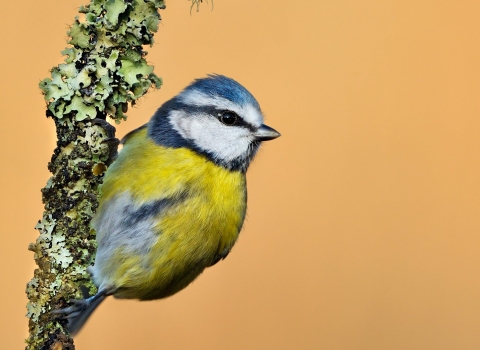Large Blue Butterfly - John Lindley
Location
Know before you go
Dogs
Dogs under effective control on upper slope and no dogs allowed on lower slope. Also please see 'Dog walking on reserves' page in the Contact section for more information.
When to visit
Opening times
Open at all timesBest time to visit
April to AugustAbout the reserve
Due to the fact that the site has never been used for intensive agriculture, this is one of the best examples of lias limestone downland and scrub in Somerset. A number of orchid species occur, alongside rare plants such as Autumn Gentian and Cutleaved Self-Heal but the jewel in the crown of this reserve is the Large Blue Butterfly.
Green Down Reserve consists of calcareous downland and scrub; it is one of the best examples of this type of habitat in Somerset. The great diversity of wildlife on the site is predominantly due to the warm, southerly aspect and the mosaic of grassland, mature trees and scrub. In addition there has never been any intensive agricultural activity on the site although a horse gallop has been created through the middle of it. This steep bank faces the railway line to London Paddington.
One of the jewels in the crown of this reserve is the Large Blue Butterfly. Declared extinct in Britain in 1979, it has since been reintroduced as part of a long term scientific and conservation programme. Green Down and the surrounding railway cutting has the highest density of large blue in the world. The marginally smaller Common Blue and Holly Blue butterflies can also be seen here.
In addition to the large blue, a number of other important butterfly species occur including Dark Green Fritillary, Brown Argus and Brown butterflies. Grizzled Skipper, Dingy Skipper, Marbled White, Meadow Brown, Hedge Brown, Comma, Peacock and Red Admiral butterflies are also found here. Many other insects have been recorded here including two notable dragonfly species and eleven notable beetles and the Shrill Carder Bee also occurs in small numbers.
The reserve has large areas of species rich grassland with many typical calcareous plants including Common Thyme, Common Rock-rose, Salad Burnet, Kidney Vetch, Squinancy-Wort, Woolly Thistle, Yellow-Wort, Lesser Centuary, Ploughman's Spikenard, Small Flowered Buttercup and Horseshoe Vetch.
A number of orchid species also occur including Autumn Ladies Tresses, Bee, Green Winged, Pyramidal and Greater Butterfly orchids. Other rare plants include Cutleaved Self-Heal, which is common on the upper slopes of the reserve, but only found at a handful of other British sites, including the only other place it is recorded in Somerset which is Cheddar Gorge.
There are several large blocks of scrub which provide structural and botanical diversity and important habitats for invertebrate species and uncommon birds including Nightingale and Lesser Whitethroat. Song Thrush, Bullfinch and Long Tailed Tits also breed in the dense patches of scrub. Green Woodpeckers are common visitors to the anthills found on the reserves grassland, they eat the ants.
Reserve conservation management – Grazing by cattle and sheep between August and May and scrub coppicing or clearance over the winter.
History and Archaeology - The Powder House at the eastern end of the reserve forms an interesting part of Britain’s industrial heritage. It was built to store gunpowder and lamp oil during the construction of the railway at the base of the hill and Somerton Tunnel nearby from 1903 to 1905. Having fallen into disrepair, it has been restored by the Trust with help from the Heritage Lottery Fund and South Somerset District Council.
More information box - Butterflies and other insects:- The Large Blue butterfly was reintroduced here in 1992 and has flourished. In 2016 Green Down held the largest British population, with over 153,000 eggs laid. Many other butterfly species can be found here including Dark Green Fritillary, Brown Argus, Brown Hairstreak, Dingy Skipper and Grizzled Skipper. Two notable moth species, the Large Nutmeg and Small Eggar a Red Data Book species have occurred, although unfortunately not recently; their larva feed on Blackthorn and Hawthorn. The Dotted Bee-Fly and Hornet Robber Fly are regularly present.



